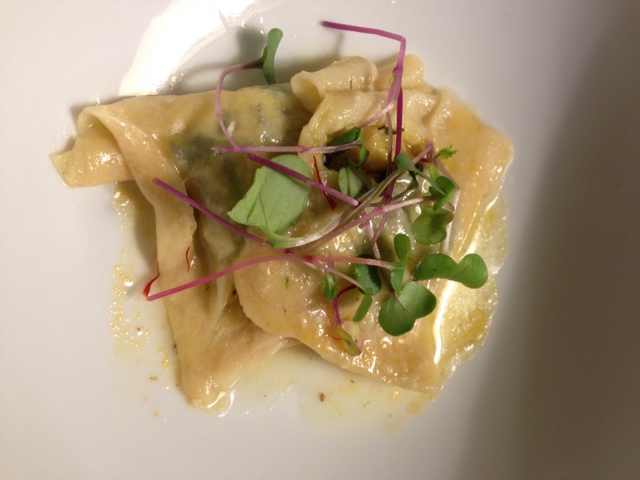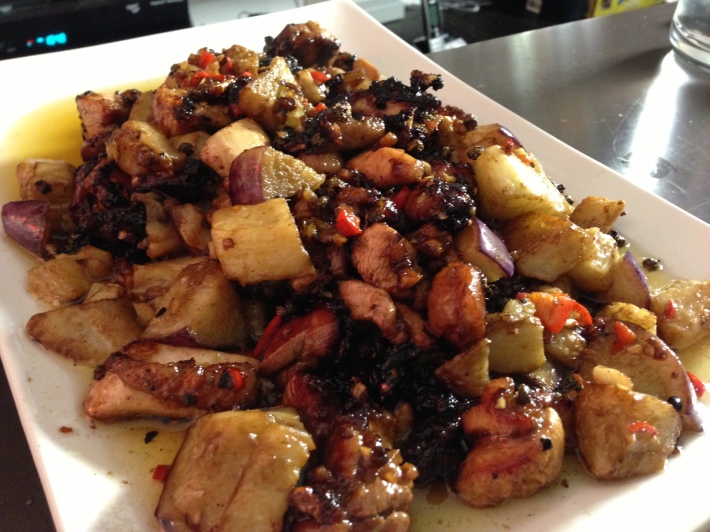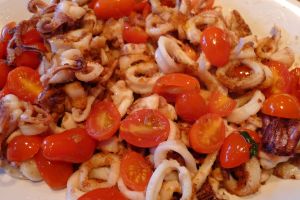I used to love Olive Garden when I was little but I always thought the name ‘Olive Garden’ had very little to do with the actual experience of eating there. I do remember an olive or two in the salad and I suppose there might be a garden involved somewhere in the process of producing the food, though I doubt it looks very much like the gardens any of us have at home.
In warmer weather, I do crave lighter foods and I like to taste vegetables throughout as many courses of the meal as possible. Salads are of course incredibly easy to make this time of year but with a bit of work, it’s possible to make the entire meal taste bright and vegetal and that’s exactly what many of us crave as summer sets in.
I love the fresh goat cheese from Lynnhaven. Their cheese is grassy, a bit tart and perfect for making a vegetable dish a bit richer. I’ve found great fresh goat cheeses at markets in nearly every region of the US. Most of my guests are omnivores but none of us misses meat when we eat this ravioli. Nor do we miss the unlimited salad. A regular bowl of salad on the side seems to do just fine.
Spring Kale and Goat Cheese Ravioli
Start by making a batch of basic pasta dough. I use a little extra egg yolk when I have very fresh eggs on hand.
In a food processor, add:
1.5 Cups Flour
1 Egg + 2 Egg Yoks
1 teaspoon of olive oil
1 teaspoon of salt
Turn processor on and slowly add ½ cup of water until dough forms into a ball.
Wrap tightly in plastic wrap and chill in the refrigerator for at least an hour.
For the filling:
Add 2 tablespoons of olive oil to a pan over medium heat with one clove of chopped garlic
Rinse and chop a small head of spring kale and add to pan
Sautee for 4 minutes or until the kale softens
Add a splash of white wine or lemon juice and cook for another minute or so
Turn off heat and let cool to room temperature
In a small bowl, stir 6 oz of fresh, local goat cheese (soft chevre rather than aged) and add the kale mixture
Add a pinch of salt and a bit of ground black pepper
To Assemble:
Using a pasta maker, roll dough into sheets and cut into 12 4”x4” squares
Add tablespoon of filling to each square and top with another square of pasta
Seal with a fork or with your fingers
(You can cover them at this point and leave them in the fridge or even freeze them to make another time)
To finish:
Heat a small saucepan of salted water until it comes to a boil
While water is heating up, melt 2 tablespoons of butter in a skillet over medium/low heat and add a pinch of salt and a few sage leaves or whatever herbs you have on hand and a drizzle of lemon
Cook ravioli in boiling water for 2 minutes and then strain and add to pan with butter
Toss ravioli in sauce and serve 3 ravioli in each bowl
Drizzle the remaining sauce over the pasta
Garnish with pea shoots or a few pieces of raw kale
Serve with Unlimited Breadsticks








